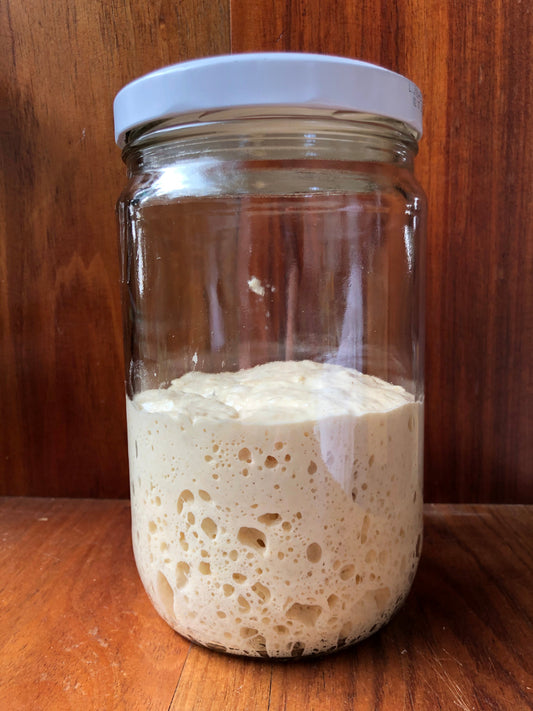Baking with a Dutch Oven at Home
For our full instructions & videos on how to bake your first loaf of sourdough at home, head to our Bread Kit Guides: Gluten-Free Guide or Wheat-Based Guide.
What is a Dutch Oven method?
Learning how to bake bread with enough steam in a domestic oven is the first challenge for a home baker when embarking on their bread journey. A Dutch oven, which is a pot made entirely of cast iron allows for enough heat & steam to replicate a commercial bread oven environment & so is the preferred method when making bread at home.
How it works
During the initial stages of baking, steam is released inside the chamber of a Dutch oven (sealed by a lid), this keeps the dough moist allowing the bread to develop a crispy, shiny crust and attain maximal volume.
What size Dutch oven?
We recommend getting the biggest one you can fit in your oven at home. Most domestic ovens are 60cm in width. If you haven't got one, it's worth the investment. Try a Pre-seasoned Cast Iron Bread Pan: all our proving bannetons (except for the Cafe Loaf) will fit inside this pan.
Method
Preheat your oven to its maximum temperature for 30-45 minutes with the Dutch oven inside.
Once your dough is ready resting inside one of our proving baskets, boil the kettle and place a piece of baking paper (wider/longer than your dough) on the bench. Sprinkle with with semolina, then tip the loaf out of the proving basket onto the paper with the seam side down & score - see our video demo here. Scoring allows the loaf to expand & rise with the aid of steam trapped inside the pot.
Carefully transfer the loaf into the hot Dutch oven along with 2 ice cubes (please take care as steam & pot can be very hot). Put the lid back on the Dutch oven & place it inside your oven. Bake for 20 minutes (still at highest heat) with the lid on, then take the lid off & bake for a further 10-15 minutes at 230 degrees Celsius or until a golden crust is achieved.
You can absolutely bake great sourdough without a Dutch oven! The key is to create steam in the oven and maintain high heat for the initial part of baking to get good oven spring and a crispy crust. Here are several effective methods:
Don't Have a Dutch Oven?
Option 1: Baking Tray + Water Tray (Most Common Alternative)
You’ll need:
- A baking stone or an inverted heavy baking tray
- Another metal tray or dish (for steam)
Steps:
- Preheat your oven with the baking stone/tray inside to 230–250°C (450–480°F) for at least 30–45 minutes.
- Place another empty metal tray (not glass!) on the bottom rack during preheating.
- Transfer your scored sourdough onto the hot baking surface (use parchment + a pizza peel or board).
- Immediately pour about 1 cup of boiling water into the bottom tray and quickly shut the door to trap the steam.
- Bake for 20–25 minutes with steam, then carefully remove the water tray, rotate the loaf if needed, and continue baking another 20–25 minutes until deep golden.
Option 2: Upside-Down Roasting Pan or Large Bowl
If you have:
- A deep roasting pan or
- A large stainless steel bowl
Steps:
- Place your bread on a hot tray or baking stone.
- Cover the loaf with the large bowl or upside-down roasting pan for the first 20–25 minutes.
- Remove the cover and continue baking for 20–25 minutes to brown the crust.
This simulates the steam-trapping effect of a Dutch oven.
Option 3: Covered Roasting Dish or Casserole
Any lidded oven-safe pot or casserole dish (like Pyrex, CorningWare, or even an enamel roaster) can work well.
Just follow your usual Dutch oven routine: preheat the vessel, load the dough, and bake covered first, then uncovered to finish.
Extra Tips for Success:
- Use parchment paper to help transfer dough and prevent sticking.
- A pizza stone or baking steel really helps if you don’t have a heavy base tray.
- Don’t open the oven too early—let the steam do its job for at least the first 20 minutes.




